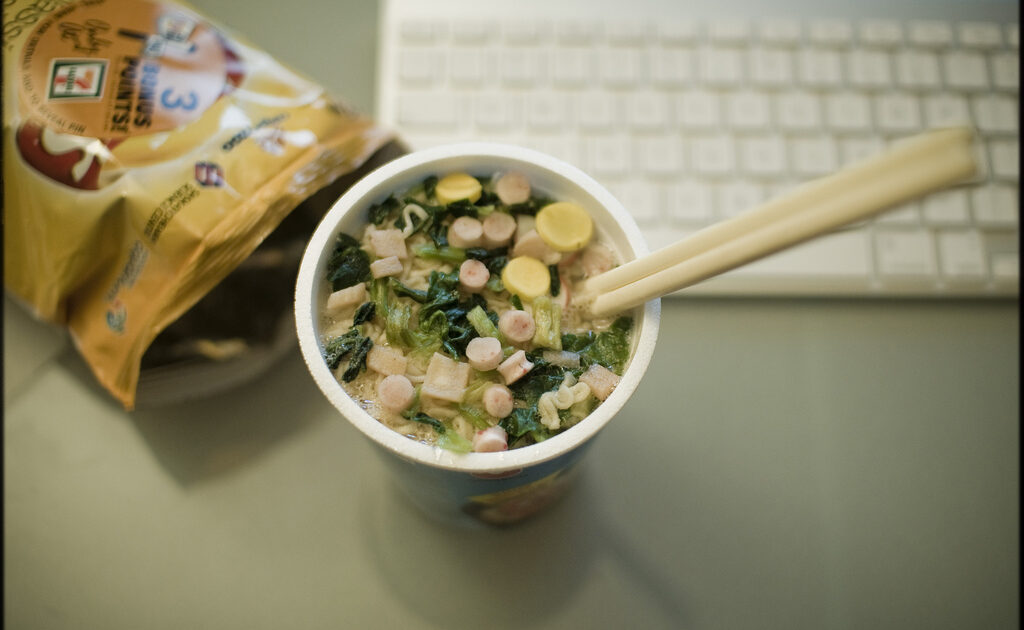5 Signs Single-Serve Processed Foods are Destroying Food Culture in America

Once upon a time in America, we made big batches of food and ate from them until they were gone—whether they fed a family of six or a single person. We didn’t cut corners by buying into the illusion that single-serve processed foods were doing anyone any favors.
Today’s market has changed dramatically. The single-serve reigns king of the supermarket. Since 2011, reports MarketWatch, sales of single-serve coffee have tripled. And sales are expected to continue to grow—more than 200 percent this year over 2011.
Of course, it’s not just coffee. Stroll through any supermarket freezer section and you’ll see empires built on meals entirely dedicated to the lone diner. (Michael Pollan and his family illustrated the absurdity of the frozen meal experience for a family in his book “Cooked.”) And beyond the frozen dinners, there are energy bars, candy bars, cans of soup, cups of soup, single-serve size cereals, pre-made sandwiches, pre-made salads, Lunchables, and of course, the single-serve soda bottle and can.
To say the single-serve is destroying our food culture is an understatement. Here are 5 signs the single serve needs to go:
1. Single-serve foods are processed foods: Convenient they may be, but in most cases you’re buying a processed, factory-extruded food product, that in all likelihood is loaded with bad-for-you ingredients.
2. Single-serves are more expensive: We have a fear of spending money on healthy food in this country. We nickname Whole Foods “whole paycheck” because it’s not uncommon to spend several hundred dollars in a single visit. But the thing is, healthy food shouldn’t be cheap. So we look at the price of a cup of soup and think it’s much cheaper than buying all the ingredients to make our own. But the bottom line is that in most cases, you save money when you make food from scratch, even if the initial investment is a bit more
3. We lose track of what we’re eating: When we scarf down energy bars, single-serve cups of coffee, cans of soda and other foods packaged to appeal to our “oh my god I am starving right now” reflex, we don’t have the type of relationship with that meal as we would if we had made any of those foods on our own. Even something as simple as a SodaStream machine does this. It allows you to make your own bubbly water for soda syrups, and that is an experience that engages you far more in what you’re consuming than cracking the tab on a can of soda.
4. We create more waste: The Keurig coffee maker designed for single cups may keep you from buying an expensive coffee at the local Starbucks, but you don’t need an ecology degree to know that all the packaging isn’t good for the environment. If you simply can’t seem to make your own cuppa on your own, bring your own mug to your local coffee shop instead. They often offer a discount, and there’s no single-serve packaging waste.
The same goes for all your other single-serving indulgences. Make a tray of energy bars once a month and freeze them. Or a soup. Make a week’s worth of sandwiches or salads in an hour on a Sunday and cut down on the waste and taste of processed single-serve meals.
5. We lose out on the meal experience: Americans eat alone. A lot. Drive thru windows are big business. And solitude has it’s place, of course. It’s not always possible to eat with others. But sometimes it is. Take advantage of the opportunity to break bread with someone else. There’s a reason the French and Italian and many other cultures around the world make time to eat with others. It enlivens the spirit. It makes food taste better, which always makes for most delicious leftovers.
Keep in touch with Jill on Twitter @jillettinger
Related on Organic Authority
Big Food’s Secret Plan To Kill The GMO Labeling Movement
Big Brother: Coming Soon To A Snack-Food Aisle Near You!
Manufacturers Spend Big Bucks to Make ‘Natural’ Foods Look Imperfect
Image: pjinomaha

